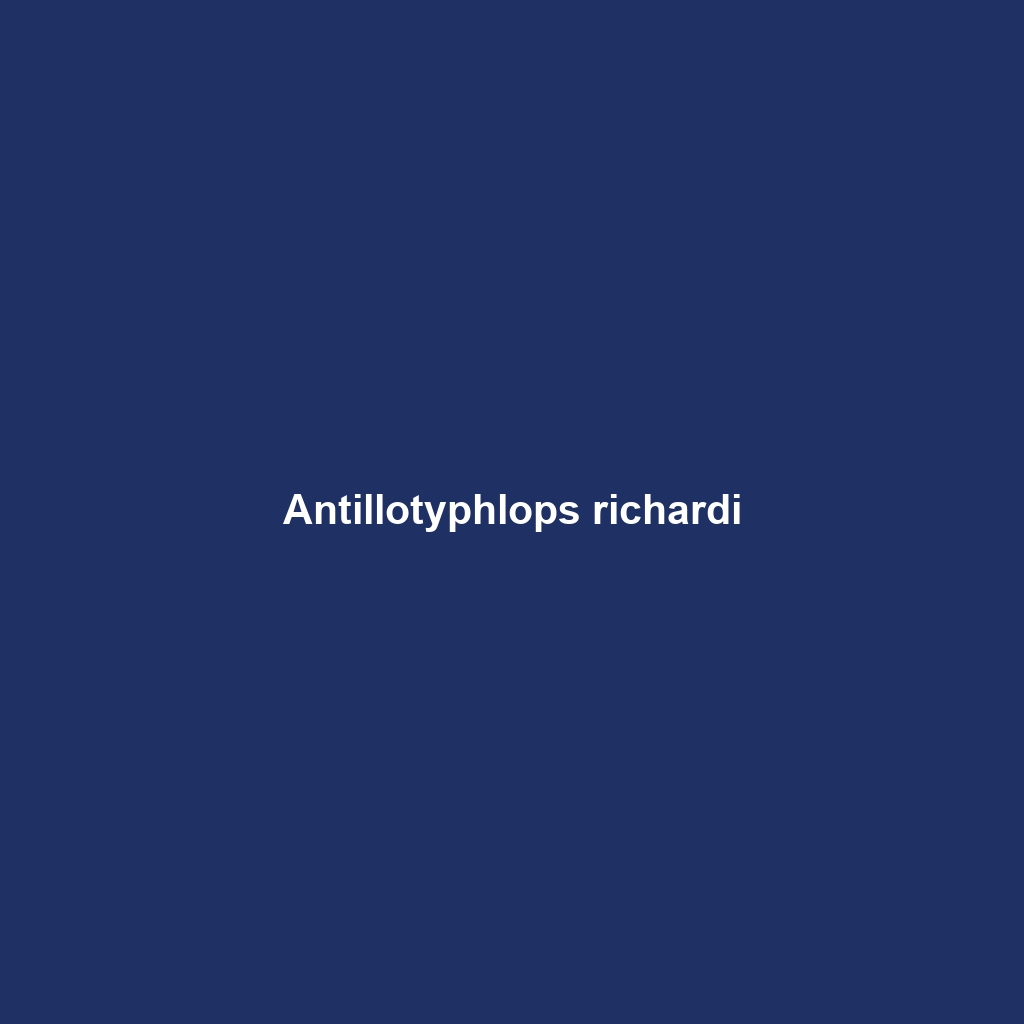Antillotyphlops richardi: An Overview
Common Name: Antillotyphlops richardi
Scientific Name: Antillotyphlops richardi
Habitat
The Antillotyphlops richardi, commonly known as Richard’s blind snake, is primarily found in the Caribbean region. This snake is endemic to the islands of the Lesser Antilles, particularly in areas such as Saint Lucia, Dominica, and St. Vincent. They inhabit tropical rainforest environments, often burrowing in moist soil under leaf litter, where they can find shelter and food.
Physical Characteristics
This species is characterized by its remarkable adaptation to a subterranean lifestyle. Antillotyphlops richardi typically grows to an average length of 30 to 50 cm (12 to 20 inches). Its body is elongated and cylindrical, with a smooth, shiny skin that varies in color from light brown to dark brown or even a reddish hue, making it blend well with its natural habitat. The head is not distinctly separate from the body, and the small eyes are covered by scales, reflecting its adaptation to a life spent mostly underground. Distinctive features include its pointed snout and the absence of limbs.
Behavior
Richard’s blind snake is primarily fossorial, spending most of its life underground. It is a solitary creature, emerging occasionally to locate mates or in search of food. These snakes exhibit a unique burrowing behavior; they use their smooth bodies to navigate through narrow tunnels in the soil, avoiding predation and environmental hazards. Their limited sight requires them to rely heavily on their acute sense of touch and smell, which proves vital for navigation and hunting.
Diet
The diet of Antillotyphlops richardi consists predominantly of small invertebrates, particularly ants and termites. Its feeding habits are critical to controlling the populations of these insects within their habitat. The snake employs a unique method of feeding by coiling around its prey and consuming them whole. This diet reflects the species’ adaptation to a fossorial lifestyle, as it primarily hunts underground.
Reproduction
Richard’s blind snake reproduces via oviparity, laying clutches of 2 to 7 eggs during the breeding season, which typically occurs during the warmer months. The eggs are deposited in a secure location underground, where they incubate until hatching. The young snakes emerge fully formed, ready to live independently. Breeding behaviors in this species are not widely observed due to their secretive nature.
Conservation Status
The current conservation status of Antillotyphlops richardi is classified as ‘Vulnerable’ due to habitat destruction and degradation caused by agricultural expansion and urbanization. Conservation efforts are necessary to preserve its natural habitats and ensure this unique species does not face further threats to its survival.
Interesting Facts
One of the most fascinating aspects of Richard’s blind snake is its ability to sense vibrations through the ground, allowing it to detect potential threats and prey. Despite its name, this species plays a vital role in the ecosystem by helping to maintain balance within insect populations, showcasing the delicate interdependence of species in its habitat.
Role in Ecosystem
Antillotyphlops richardi contributes significantly to its ecosystem’s health by controlling ant and termite populations. Its predator-prey relationship with these insects helps maintain ecological balance. Additionally, as a burrowing species, it aids in soil aeration and nutrient cycling, further supporting plant growth and overall biodiversity.
